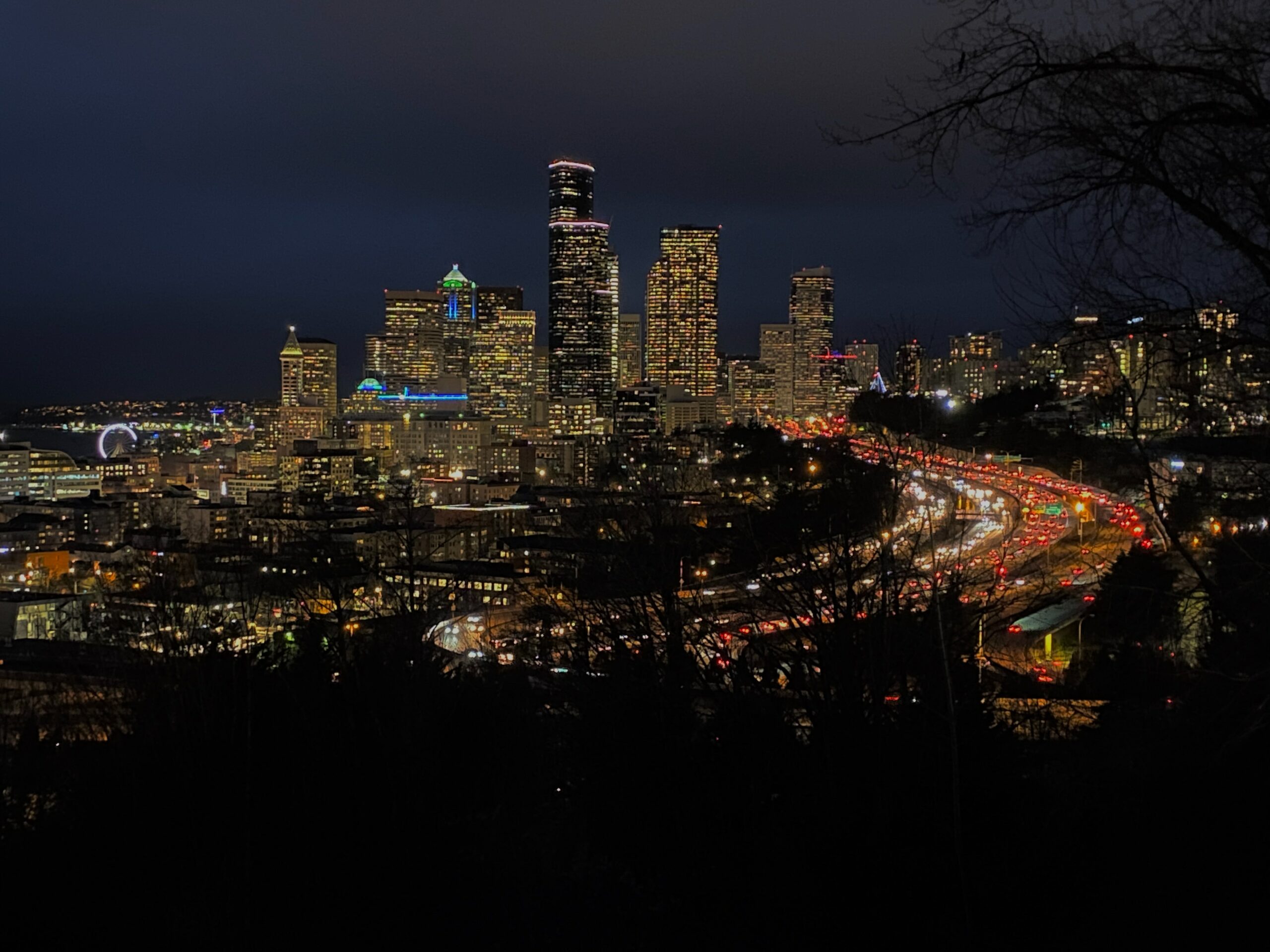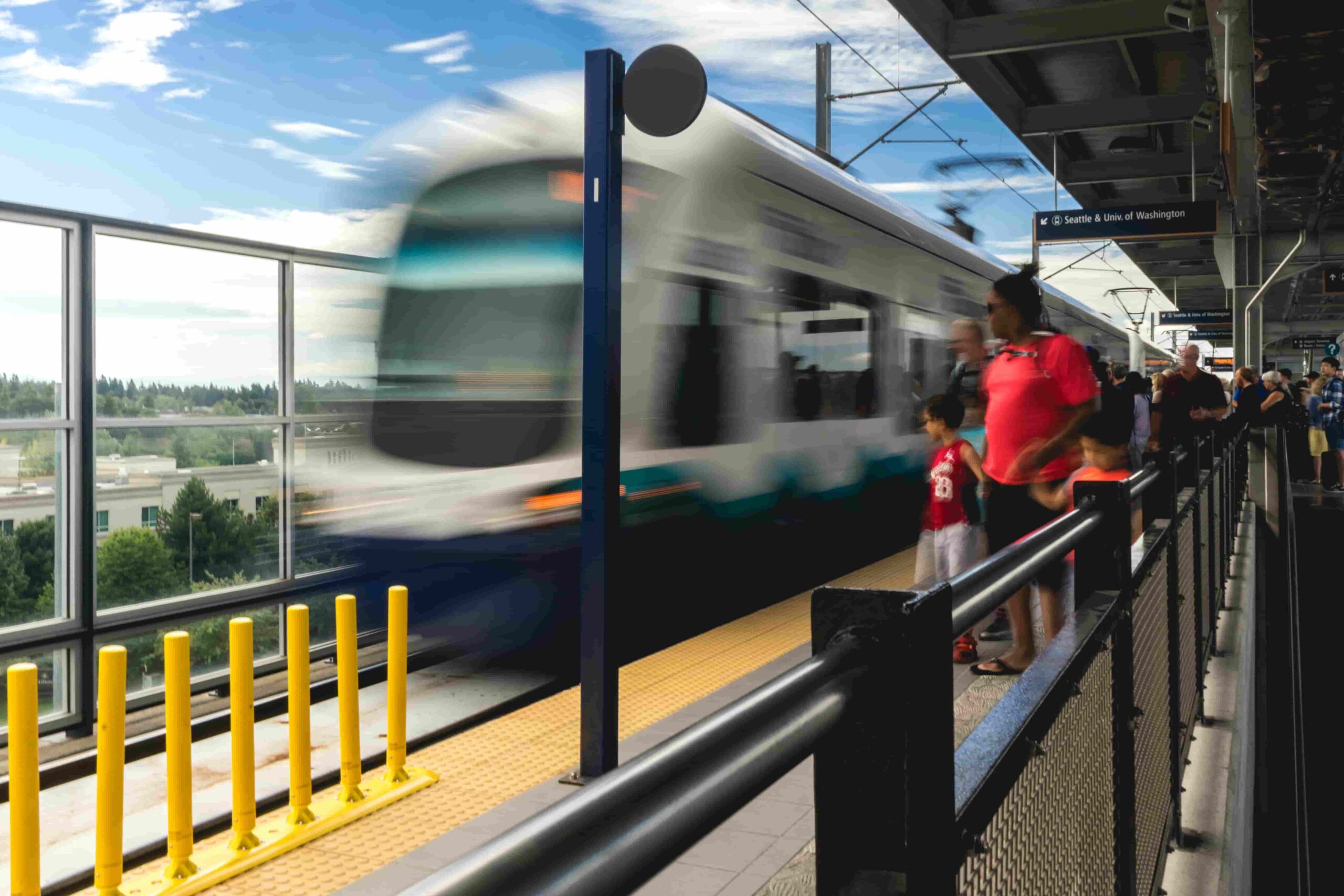Surrounded by evergreen forests and the snowy Cascades, Seattle is one of the very few places where unrivaled natural beauty meets modern innovation and a vibrant cultural scene.
For these reasons and more, Seattle was the fastest-growing major city in the United States. in 2020, a year that saw swaths of Americans leaving urban centers during the COVID-19 pandemic.1 Once a timber town, the Emerald City is home to some of the world’s biggest biotech, software, and e-commerce firms. Throughout its storied history, Seattle has remained a unique place to call home.
As is the case with most major cities, however, life in the big city of Seattle has unique features that can be considered either pros and cons, depending on your preferences and perspective. If you’re thinking about moving to another state and have settled on Washington state’s largest city, then look no further for all you need to know about its attractions and potential annoyances. In this guide, we’re breaking down the pros and cons of living in Seattle. So, let’s dive in.
What’s So Special About Seattle?

Every city has its pros and cons. Before we get into the latter, let’s highlight some of the things that make the Seattle metropolitan area one of the best places to live and work.
#1 The Job Market
One of the best things about living in Seattle is its robust employment market.
As has been the case with so many cities throughout the COVID-19 pandemic, available jobs in Seattle are surging.2 Just take a look at these facts:
- The Evergreen state continues its rapid growth, bolstered by some of the best companies to work for in Seattle such as Starbucks, Meta, Google, Nordstrom, R.E.I., Amazon, and Microsoft, all of which have headquarters or major office complexes in Seattle and the surrounding metropolitan area.
- While Seattle is widely known as a haven for biotech, aerospace, software, and e-commerce, there are plenty of other good-paying jobs to be had in Emerald City.
Besides plenty of opportunities, you might also find strong compensation. According to the U.S. Bureau of Labor Statistics, Seattle workers make 32% more on average than their counterparts around the nation.3 Using the Bureau’s May 2020 statistics, we’ll help you get a better idea of wages you can expect to find in Seattle.
The following list provides the mean hourly wage of some of the city’s most common job categories.
- Sales and related industries – $27.15
- Office and administrative support – $24.21
- Transportation and material moving – $25.19
- Business and financial operations – $44.02
- Computers and mathematics – $61.42
- Educational institutions and libraries – $31.66
In case you were wondering, the most common job in Seattle is a software developer.4 But with higher wages across the board for pretty much every type of occupation, Seattle has a lot to offer to working professionals seeking a market in which to not just grow, but flourish. For example, between 2016 and 2020, Seattle added 48,000 tech jobs, outpacing the rest of the nation.5
#2 Culture and Nightlife

From speakeasies to Space Needles, breweries to burlesques, Seattle has a lot to offer those looking for tourist attractions by day and something more by night.
Here’s what you can do in some of Seattle’s best neighborhoods:
- Columbia City – This historic area in southeast Seattle boasts of a great shopping district along Rainier Avenue, excellent eateries like Off Alley and La Medusa, and a farmers market that runs from May to October. Additionally, you might want to check out the Northwest African American Museum, which focuses on how African Americans came to the Pacific Northwest and includes an exhibition on local music legend Jimi Hendrix.
- Ballard – Home to the National Nordic Museum, this trendy waterfront district has some seriously great eateries and independent stores. Grab a slice of Detroit-style pizza at Sunny Hill or go for some contemporary American cuisine with a French-fine dining twist at Copine. Known for its beer, Ballard has over a dozen breweries in taprooms in just a mile radius, including such craft brew establishments as Lagunitas, Reuben’s, and Stoup.
- Capitol Hill – The heart of Seattle’s LGBTQ+ community is home to legendary gay bars, the beautiful Volunteer Park, and the intimate Taneda sushi bar. While strolling through the park, be sure to pay a visit to the Seattle Asian Art Museum, where you can find ancient and modern work by artists from Southeast Asia and the Asian Pacific Islands. If you have time, check out the historic Water Tower Observation Deck or the burial site of legendary martial artist Bruce Lee and his son, the actor Brandon Lee.
- Central District – This historically African American district, once home to Jimi Hendrix and Quincy Jones, continues to carry its strong cultural traditions into the twenty-first century despite the encroachment of gentrification. There, you can grab some of Ezell’s famous fried chicken or go for some unbelievably good soul food at Communion Restaurant and Bar. Once you’ve eaten your fill, head over to the Langston Hughes Performing Arts Center, the Byzantine synagogue-turned Black community hub that hosts the annual Seattle Black Film Festival.
#3 Mountains and Lakes and Forests and …
You get the point. Take one look around Seattle and you realize that you’re in a very special place. If you catch yourself staring at Mount Rainier whenever you get a free moment, you’re not alone.
Humans have been making their way to the stratovolcano for nearly 10,000 years, and Rainier, or Tahoma as it’s traditionally known, continues to provide spiritual and bodily sustenance to the Yakama, Nisqually, Puyallup, and Squaxin tribes, among others.6
While Seattle is within driving distance to national parks like Mount Rainier, North Cascades, and Olympic, there’s plenty to do outside in the Emerald City itself. Most notable among the city’s greenspaces is perhaps Discovery Park, a 534-acre natural park overlooking Puget Sound.
If you’re more aquatically-minded, then you might want to make a trip to Lake Washington, the second largest freshwater lake in the state and a great place to take an Argosy Cruise from Seattle to Bellevue.
#4 Public Transportation

If you’re thinking of moving to Seattle, you might be pleased to know that the city has some great and affordable options for public transit, many of which you can access by using a refillable ORCA card.
If you’re a commuter who likes to avoid driving, you can take Link Light Rail, King County Metro Transit, or Seattle Streetcars, all of which cost between $2.25 and $3.25 per ride. On the latter, you can even purchase a convenient day pass for just $4.50!
#5 The People
Last, but definitely not least, are the people. After all, a city is only as great as the people who live and work there. While its demographic skews predominantly white, Seattle is home to a diverse community of Asian Americans, Latinos, Native Americans, and African Americans. Additionally, the city is home to one of the largest LGBTQ+ communities percentage-wise in the United States.7
While largely a Democrat stronghold, the city has seen some successful third party candidates, like the Freedom Socialist Party’s Kshama Sawant, elected to Seattle City Council.
Seattle also has a rich history as a civil rights and labor stronghold and continues to be a hub for social movements and protests against racism, inequality, and police brutality.8,9
Potential Cons of Living in Seattle
While we could spend all day singing Seattle’s praises, there are some potential cons to keep in mind if you’re planning on moving to this city:
- It is known that the average cost of living in Seattle can be pretty high. For instance, a 2 bedroom apartment rental averages $2,724 a month, while the median home price is $826,200.10
- The cost of certain living expenses can also be quite high. For example, Seattle residents paid $4.090 per gallon of gas in November 2021. Compare that with a national average of $3.576 per gallon.11
- On average, Seattle residents spent 12.1% of their annual household expenditure on food.12 In the same time period, the average American consumer spent just 8.6% of their disposable income on food.13
While largely economic in nature, these cons can make a big difference when it comes time to figure out your budget for affordable housing and all of your daily necessities. Before moving to Seattle—or anywhere for that matter—it’s important to make sure that your income will be enough to sustain the kind of life you want to lead.
Embrace All Seattle Has to Offer with Common
At Common, we know what it means to make the most out of big city living. If you’re interested in living in Seattle, stay tuned! We’re opening homes across the city this year. Follow us on Instagram to get the latest updates.
Sources:
- Seattle Times. Surprise! Seattle was the fastest-growing big U.S. city in 2020. https://www.seattletimes.com/seattle-news/data/surprise-seattle-was-the-fastest-growing-big-u-s-city-in-2020/
- Puget Sound Business Journal. Jobs are surging in Seattle. The labor force? Not so much, and it might get worse. https://www.bizjournals.com/seattle/news/2021/09/22/labor-force-gap-high-job-growth.html
- U.S. Bureau of Labor Statistics. Occupational Employment and Wages in Seattle-Tacoma-Bellevue — May 2020. https://www.bls.gov/regions/west/news-release/occupationalemploymentandwages_seattle.htm
- Stacker. Most common jobs in Seattle. https://stacker.com/washington/seattle/most-common-jobs-seattle
- GeekWire. Seattle leads nation in ‘brain gain,’ adds tech jobs faster than any other big U.S. market over 5 years. https://www.geekwire.com/2021/seattle-leads-nation-brain-gain-adds-tech-jobs-faster-big-u-s-market-past-5-years/
- National Park Service. Mount Rainier is a special place. https://www.nps.gov/mora/learn/management/what-s-special.htm
- Visit Seattle. Seattle’s Top LGBTQ Hotspots and Resources. https://visitseattle.org/things-to-do/lgbtq/
- University of Washington. The Seattle Civil Rights & Labor History Project. http://depts.washington.edu/civilr/index.htm
- The Guardian. Seattle’s activist-occupied zone is just the latest in a long history of movements and protests. https://www.theguardian.com/us-news/2020/jun/21/seattle-activist-occupied-zone-chop-long-history-movements-protests
- NerdWallet. City life. https://www.nerdwallet.com/cost-of-living-calculator/city-life/seattle-wa
- U.S. Bureau of Labor Statistics. Average Energy Prices, Seattle-Tacoma-Bellevue – November 2021. https://www.bls.gov/regions/west/news-release/pdf/averageenergyprices_seattle.pdf
- U.S. Bureau of Labor Statistics. Consumer Expenditures for the Seattle Metropolitan Area: 2019–20. https://www.bls.gov/regions/west/news-release/consumerexpenditures_seattle.htm
- USDA Economic Research Service. Food Prices and Spending. https://www.ers.usda.gov/data-products/ag-and-food-statistics-charting-the-essentials/food-prices-and-spending/

